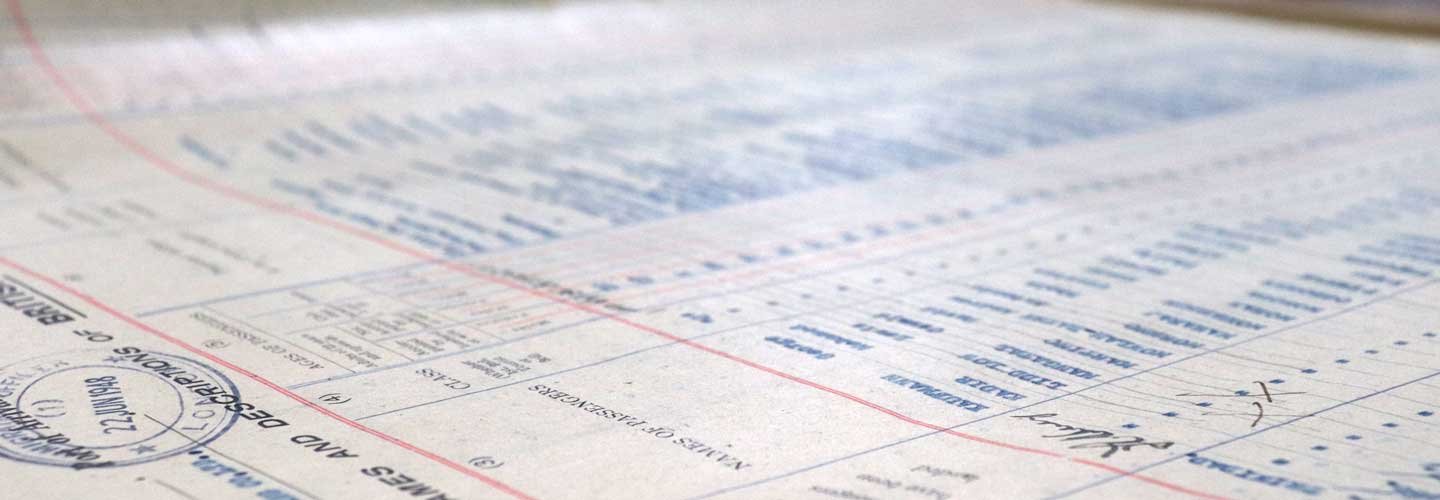Passenger lists
The National Archives holds the UK’s surviving inward and outward passenger lists from the late 19th century to the mid 20th century, when air travel became more common. The lists are often important in family history research, allowing people with migrant backgrounds to begin to trace the journeys of their ancestors to Britain.
These iconic lists capture key moments in British history such as the landing of the Empire Windrush at Tilbury docks in 1948, and also the less well-known arrival of the ships that pre-dated the Windrush, carrying post-war migrants from the Caribbean.
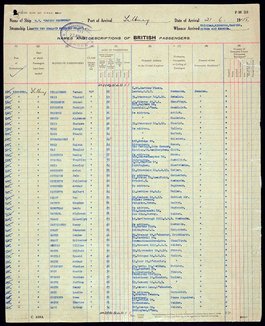
An inward passenger list from the Empire Windrush. Catalogue reference: BT 26/1237.
The Ormonde
The SS Ormonde was an ex-troop ship that arrived in Britain with a significant numbers of Caribbean migrants. It docked in Liverpool on 31 March 1947 – over a year before the Empire Windrush.
The passenger list informs us that 241 people made the journey, including eleven stowaways and six distressed seamen. The list shows a diverse range of skills and professions among the passengers, who included carpenters, engineers, plumbers and more.
However, as a result of the colour bar in Britain, many could only find employment in the least desirable areas of the economy, in work that was typically semi- and unskilled, with low wages and poor conditions. Indeed, a study by the sociologist Ruth Glass carried out between 1958 and 1959 showed that 55% of Caribbean migrants experienced job downgrading after their arrival.
Among the travellers was Ralph Lowe, the father of award winning poet Hannah Lowe. Hannah Lowe’s chapbook of poetry, which was inspired by and takes its title from the vessel, informs us that Ralph paid £28 for his ticket.
-
- From our collection
- BT 26/1233
- Title
- The SS Ormonde passenger list
- Date
- March 1948 – May 1948
The Almanzora
Following the Ormonde was the Almanzora, which docked in Southampton on 21 December 1947. It brought 200 Caribbean passengers to the UK, many of whom were former RAF service personnel who had served during the Second World War. Like the Ormonde before it, the passenger list shows a diverse range of skills and professions.
Beginning with the names Olga and Jacqueline, it also highlights the large number of Caribbean women making the journey and their critical role in the establishment of Britain’s post-war black communities, while at the same time challenging some of the accounts of all-male travellers on the earlier vessels.
-
- From our collection
- BT 26/1231/41
- Title
- The SS Almanzora passenger list
- Date
- 21 December 1947
The Empire Windrush
And then, most famously of all, came the Empire Windrush. Although the date of the ship’s arrival is often given as 22 June 1948, a day which is now marked annually as Windrush Day, the passenger list actually records the date as 21 June.
Amongst the names in this passenger list is that of Aldwin Roberts, better known as the calypsonian Lord Kitchener who famously sung ‘London is the place for me,’ expressing the optimism that many had in journeying to what was often seen as ‘the mother country.’ It is also notable that, like many others, he wrote ‘no address’ for ‘proposed address in the United Kingdom’. Many of these migrants would find accommodation in the air raid shelters underneath Clapham South underground station. This would at least delay their confrontation with some of the well-documented horrors of finding a place to stay as a black (or indeed Irish) person, in the ‘host’ country
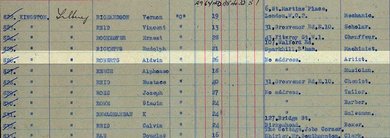
Aldwin Roberts' entry. He is listed as a 26-year-old artist of no address. Catalogue reference: BT 26/1237
Another well-known name on the Windrush passenger lists was that of Sam King. King served as an engineer in the RAF during WWII, and would eventually become the first black mayor of Southwark. Again, this highlights the diverse talent and rich contributions that these settlers would make to British society.

Sam King's entry. He was a 22-year-old carpenter when he arrived in the UK. Catalogue reference: BT 26/1237.
-
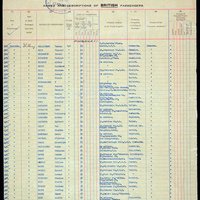
- From our collection
- BT 26/1237
- Title
- The Empire Windrush passenger list
- Date
- May 1948 – October 1948
A West Indian in England
The passenger lists held in record series BT 26 only scratch the surface of the records at The National Archives that relate to post-war migration. Examples of other records include the draft cover page of a pamphlet entitled A West Indian in England. This was commissioned by the Central Office of Information in 1949 to show potential migrants what to expect in ‘unknown and darkest England.’
The booklet, co-authored by Dudley Thompson, one of Britain’s first black pilots, who served during the war and would go on to become a leading politician in Jamaica, provides a hint at the broader wealth of resources held at The National Archives.
-
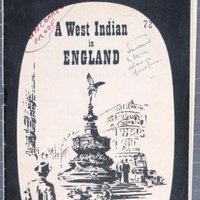
- From our collection
- CO 875/59/1
- Title
- A West Indian in England
- Date
- 1949 – 1951
As the archive of the UK government, The National Archives’ records tend to represent the voice of officialdom. However, when combined with resources from community archives, such as The Black Cultural Archives in Brixton, The Ahmed Iqbal Ullah Race Relations Resource Centre and Education Trust in Manchester, and The George Padmore Institute, they can help researchers piece together a much more rounded picture of the lives of the sojourners and settlers. They can also provide a detailed insight into such themes as the ‘push’ and ‘pull’ factors of migration, the experiences of women, and much more.
